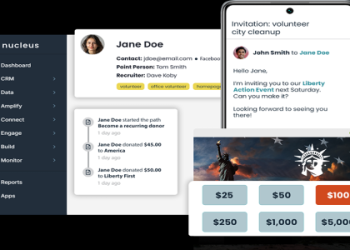Social media has become the fastest route to a full caseload, yet one ill-worded post can trigger disciplinary action faster than you can hit “publish.” The solution is not to abandon the platforms where 4.9 billion people scroll daily, but to run campaigns engineered for both reach and rule-following. Below is a field-tested blueprint that lets plaintiffs’ firms, boutique practices and global chambers turn likes into retainers while staying squarely inside ABA Model Rule 7.2, FTC endorsement guides, HIPAA, CASL, GDPR and every state bar add-on you’ve never heard of.
1. Map the Regulatory Terrain Before You Post
Start with a two-column spreadsheet: left side lists every jurisdiction where you are admitted; right side logs the corresponding attorney-advertising rules. Highlight the strictest requirement in each row—those become your campaign ceiling. If Texas demands the word “advertisement” on every paid post and Florida caps emotional-laden language, bake both into the template. The extra five minutes saves five months of grievance defense.
2. Build a “Red-Flag” Lexicon
Create a shared cloud document containing absolutes you can never promise: “guarantee,” “sure-win,” “millions recovered” (unless you literally have that verdict on record). Supplement it with medical terms that imply HIPAA-protected facts. Program your scheduling tool to auto-quarantine any caption that scores above zero on the lexicon.
3. Use Interest-Based Targeting, Not Protected-Class Targeting
Facebook’s Look-Alike audiences are tempting, but selecting “recently diagnosed with mesothelioma” can breach privacy laws. Instead, target by interests such as “DIY home renovation” for lead-paint claims or “Navy veterans” for shipyard-asbestos cases. You reach the same cohort without touching sensitive-health data fields.
4. Make the Lawyer the Face, Not the Claim
Instead of posting “We won $3 M for a client,” film the attorney explaining why verdicts vary. Short, subtitled clips humanize the lawyer, educate the viewer and skirt Rule 7.1’s prohibition on “misleading” success narratives. Add a caption that reads “Past results don’t predict future outcomes” in the first 125 characters so the disclaimer appears before the “…more” break.
5. Bake Disclosures Into the Creative
When influencers or clients review your firm, superimpose “Ad: Paid Attorney Sponsorship” on the opening frame of Stories or Reels. FTC staff have explicitly said burying #ad in a 30-hashtag swamp is insufficient. A 4-point condensed font on a TikTok that users can’t pause equals probable consent decree.
6. Guard the Comment Section Like a Courtroom
Algorithms reward engagement, but a reply that accidentally creates an attorney-client relationship is malpractice waiting to happen. Pin a top comment that states: “We can’t give legal advice in comments—call us.” Activate keyword filters to auto-hide phrases such as “What should I do if…” or “Can I sue for…” Review hidden replies weekly and send curated leads to an intake portal that logs metadata for conflict checks.
7. Capture Consent at the Click
Every paid ad should land on a jurisdiction-specific intake form whose submit button is wrapped in explicit consent language: “I consent to receive attorney advertising and SMS updates at the number provided.” GDPR’s “unambiguous” standard met, TCPA litigation defused.
8. Archive Everything— Forever
Screenshots are not enough. Deploy an API-based archiving platform that stores video, metadata, audience settings and even emoji in native format. State bars can audit campaigns up to two years post-publication; a retrievable record cuts investigation time—and legal fees—by 80 percent.
9. Localize, Don’t Duplicate
Google my Business posts must not mirror Instagram captions verbatim if Illinois requires a physical-office street address on “any electronic communication.” Create one master content set, then run it through a geo-tag layer that appends the correct disclaimer, currency and privacy link before auto-publishing.
10. Measure What Mitigates Risk
Track three metrics beyond cost-per-lead: (a) unsubstantiated claim complaints, (b) ad disapproval rate, (c) archived-post retrieval time. If any KPI deteriorates month-over-month, pause the campaign and run a compliance audit before scaling. A firm that followed this protocol slashed grievance inquiries 57 percent while doubling qualified leads in one fiscal year.
Quick-Start Checklist
☐ Register an .ad subdomain for all campaign links—easy for regulators to spot, easier for you to isolate in discovery.
☐ Add “Attorney Advertising” alt-text on every static image for screen-reader accessibility and regulatory transparency.
☐ Rotate disclaimers into alt-metadata of videos; some state bars treat hidden captions as part of the communication.
☐ Assign one non-lawyer marketer as “Compliance Liaison” with an ethics CLE requirement—courts respect firewalls.
☐ Run a quarterly “grievance fire-drill”: pull ten random posts, deliver them to outside counsel for mock review.
Conclusion
Social media legal marketing campaigns can deliver exponential ROI, but only when compliance is engineered at the creative stage rather than bolted on after the fact. Treat every tweet, Story or YouTube Short as if it will one day be Exhibit A. Build your content calendar inside guardrails, and the only thing that will go viral is your reputation for integrity—and the steady stream of clients who hire you because of it.
























